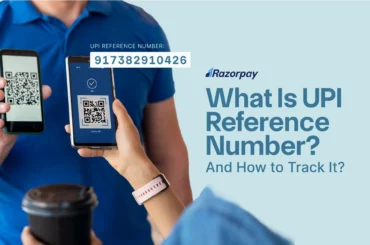The Indian Financial System Code (IFSC or IFS Code) is what facilitates all electronic transfers in India. Its function is to help identify the specific bank branch that an account is set up in. Currently, there are over 150,000 IFSC Codes operating in India, with more than 1,400 banks all over the country. The code itself is an alphanumeric one, with 11 characters. In this article, we will go over everything you need to know about the IFS code and how it works.
How to find your IFSC Code?
Finding your IFSC is quite simple. All you need to do is go to the website of the Reserve Bank of India and look through the list of codes posted there. Conversely, you can also look at the cheque book issued to you by your bank as the IFS Code is generally mentioned there. Various third-party websites that deal with banking information and finance also post information about these codes and you can look through their lists too.
What does the IFSC Code mean?
The IFSC has a very specific format and each number represents something. As stated earlier, the code is an alphanumeric one with 11 characters. The first 4 characters generally help computers identify the name of the bank involved in the transaction. These characters are alphabetical. The fifth character in the code is 0. This is a standardized format as this character is reserved for future use. The remaining characters represent the branch of the bank that is used. This part of the code helps systems route payments to the right branches during NEFT and RTGS transactions. These digits are more often than not numerical, however, sometimes they can have alphabetic components too. While the first 4 characters that identify the bank are assigned by RBI, the branch component is entirely left to be decided by the bank itself.
How does the IFSC Code help with RTGS transactions?
RTGS transactions work in the following way:
- The central processor’s technical operator must first receive payment instructions from the remitting bank
- The central processor then strips down the message into its main components. This includes the amount that has to be transferred, the IFSC, and details regarding the receiving and issuing banks
- The central bank then processes the amount and sends the funds to the receiving bank by debiting them from the bank that issued the RTGS
- It also sends a message to the receiving bank in order to inform the receiver about the success of the transaction
RTGS payments have transaction charges that depend on the amount that’s being transferred, so it is important to keep those in mind when making these transactions.
| Inward transactions | These do not have any transaction charges |
| Outward transactions from Rs 2 lakh to Rs 5 lakh
Outward transactions that are over Rs 5 lakh |
Rs 25
Rs.50 |
Do note that not all Bank Branches support RTGS transactions.
How does the IFSC help with NEFT transactions?
NEFT transactions are another way to electronically transfer funds. Unlike RTGS, they do not have a high minimum transaction amount, which means that anyone can use it at any given time for their transactions. The following is what happens when someone initiates a NEFT transaction:
- The individual or corporate must begin by filling out a form and adding all the relevant beneficiary details in it. These details include the name of the beneficiary, the account number, IFSC, the account type and the amount that needs to be transferred
- The remitting bank then sends a transfer message to the NEFT center
- The NEFT service center then processes the message, and then sends it to the clearing center which is controlled by the RBI
- The NEFT clearing center uses the IFSC to sort the transfers on the basis of bank branches, which is why these codes are so important to facilitate these transactions
- Then, the transfer occurs and the funds reach the beneficiary’s account after they are debited from the sender’s account
Like RTGS transactions, NEFT transfers also have transaction charges applicable to them. These charges are as follows:
| Transaction Amount | Charges (inclusive of applicable taxes) |
| Below Rs 1 lakh | Rs 5 |
| Rs 1 lakh and up to Rs 2 lakh | Rs 15 |
| Above Rs 2 lakh | Rs 25 |
Note that your bank charges may differ slightly for RTGS or NEFT transactions from the above. Please reach out to your bank or check their website for the exact charges. The above is just indicative.
This is how IFS codes are useful in making transactions through banks.


